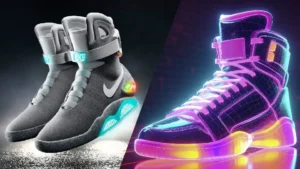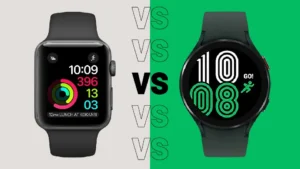While smartwatches dominate headlines, a quieter but seismic shift is unfolding on users’ fingers. Analysts predict the smart ring market will surge to $10 billion by 2030 (Grand View Research), fueled by stealthy innovation and consumer demand for unobtrusive tech. Here’s why these tiny wearables are poised to redefine personal health, connectivity, and beyond:
1. The Stealth Growth Engine
• Market Surge: Sales of smart rings jumped 150% in 2023 (Counterpoint), driven by Oura Ring’s viral wellness focus and Samsung’s upcoming Galaxy Ring launch.
• Investor Frenzy: Startups like Circular and RingMD secured $200M+ in 2023 funding, while Apple explores patents for a health-focused ring.
• Consumer Shift: 42% of buyers cite “watch fatigue” as their reason for switching (TechBrew survey).
2. Tech Packed in Millimeters
• Clinical-Grade Sensors: Infrared PPG sensors monitor heart rate and blood oxygen (Oura Ring Gen3).
•Skin temperature tracking detects early illness (WHOOP’s 2024 fever alert feature).
•ECG capabilities in FDA-cleared models (Movano Evie Ring).
• Power Efficiency: Graphene batteries enable 7-day runtime (Ultrahuman Ring Air).
•Wireless charging via NFC (McLear NFC Ring).
• Material Innovation: Titanium alloys resist corrosion; ceramic coatings prevent skin irritation.
3. Beyond Health: Invisible Utility
• Contactless Control: Unlock doors/cars via NFC (Tesla partnership with VivoKey’s crypto-implant ring).
•Gesture-based AR navigation (Meta’s prototype for Quest VR).
• Enterprise Adoption: Amazon pilots warehouse staff ID/payment rings to replace badges.
•Airlines test boarding via biometric rings (Delta’s 2025 trial).
• Fashion Fusion: Gucci x Oura collabs blend luxury design with sleep tracking.
4. Why Smartwatches Should Worry
• Accuracy Edge: Rings avoid wrist motion artifacts, delivering 30% more precise sleep data (Stanford study).
• 24/7 Wearability: 80% of users keep rings on during showers/sleep vs. 35% for watches (WearableTech Insights).
• Lower Barrier: 199–199–349 price tags undercut premium smartwatches (Apple Watch Ultra: $799).
5. Challenges Holding the Ring Back
• Battery Limits: Miniaturization restricts capacity; solar charging remains experimental.
• Sizing Issues: One-size-fits-none—brands like RingConn now offer 12 adjustable sizes.
• Privacy Risks: Biometric data leaks (e.g., 2023 Oura API breach) demand stricter encryption.
6. The Road to $10B: What’s Next?
• AI Integration: ChatGPT-powered rings (Rabbit R1’s “health coach” prototype) analyze data trends. Predictive alerts for migraines or metabolic shifts (Nutrisense’s glucose ring).
• Medical Expansion: FDA-cleared rings for chronic condition management (e.g., epilepsy, diabetes).
• Metaverse Synergy: Haptic feedback rings for immersive VR/AR interactions (Tactigon’s 2025 roadmap).
The Bottom Line
Smart rings prove that big tech revolutions can come in small packages. By solving smartwatches’ pain points—bulk, distraction, and inaccuracy—they’re carving a niche as essential, invisible life tools. As Samsung and Apple join the fray, the $10B forecast might just be the start. One thing’s clear: the future of wearables isn’t on your wrist—it’s on your finger. 💍





